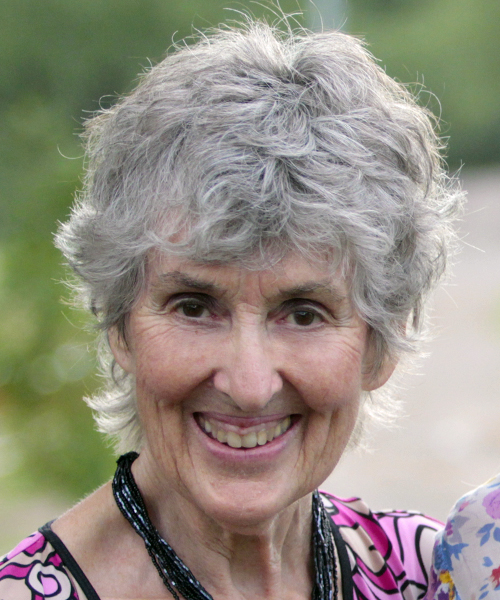Joining the Dots
We have all learned a lot in our lifetime about this and that, and have retained in our memories what interests us most. Our areas of knowledge are like a series of oases in a desert of present unknowing. Sometimes there is a route between one oasis and another—a kind of “aha” pathway that allows us to see how one set of ideas fits into another. If several of these oases are linked by a number of travel routes, we begin to get an inkling of a bigger picture. (This is, in fact, the way our brain works, when neurons create connections with other neurons, thus amplifying our means of comprehension.) As our awareness of the bigger picture grows, we start to see a meaningful pattern that suggests there is a Master Mind behind it all and whose presence counteracts the idea that creation is some kind of random accident. As poet Eugene Warren puts it:
Is it chance
or dance moves
the world?
Is the world
blind and dumb
or bloom, festal?
A vain jest,
or holy feast?
We can see how this appreciation of divine pattern is not one that is pursued in the regular school system. In schools knowledge is kept separate from spirituality for fear of offending non-believers or differing believers, and therefore cannot be pursued in any real depth. Curriculum is packaged with specific subject information to be later tested in multiple choice exams, and the student may not have had enough opportunity for reflective, creative thinking. Good teachers, of course, will always encourage students to expand their vision when they can, but in the regular public schools, due to the demands of a confined curriculum, this process usually stops short of a cosmic perspective.
The word “cosmos” derives from a Greek word meaning “order” and, in a general sense, a cosmos is an orderly or harmonious system. It is the antithesis of chaos. Deepak Chopra reflects: Our biological rhythms are the symphony of the cosmos, music embedded deep within us to which we dance, even when we can’t name the tune. Mathematics expresses values that reflect the cosmos, including orderliness, balance, harmony, logic, and abstract beauty. And regarding cosmic connections, John Muir said: When we try to pick out anything else in the Universe, we find it hitched to everything else in the Universe. This kind of spiritual thinking is the glue that can hold together our studies of humankind and the world around us.
Shrinking Thinking
Few of us, however, have been brought up with these concepts. Our present society does not value this kind of thinking, as it is presently run by a powerful minority working for its own profit to the detriment of the general population. And it is in the interest of this powerful controlling minority to keep the populace dumbed down. Why would a system run by such greed-motivated individuals want to spend much money on education, and in particular, on an education that promotes a benign, world-embracing vision that is dedicated to protecting the web of life? To encourage people to think in such an enlightened manner would run counter to the ambitions of the ruling few.
In this dumbed-down state, we are less inclined to want to join the dots around us. But in truth we are many-faceted, and the simple fact of being alive brings us the opportunity to learn every possible moment. We can contemplate, embrace change, and adjust our mindscapes. We can train ourselves to be very aware of the passing moment, which opens the door to the next one, and the next one. . . . But, in spite of all that, we often prefer the comfort of staying within a small circle of known facts, traditions, and thinking patterns, instead of rising to the challenge of breaking new ground and seeing new connections. One of the reasons we are inclined to just hunker down in life’s circumstances without asking too many questions, is the kind of uninspired education that we may have received. Albert Einstein said, The only thing that interferes with my learning is my education!
 The pattern of thinking in a circumscribed way often dominates further educational training for those students who leave school and seek to enter a career. They can all too frequently find themselves in a narrow and over-specialized framework that is not conducive to thinking outside the box. Over specialization in various fields has become a kind of cancer that blocks out holistic ways of seeing things, each field delving more and more into its own depth of detail in a self-serving way. This happens in the medical profession when a specialist in one part of the anatomy is not inclined to take into consideration the health of the whole person; in the legal profession when law can become less than humane through its own detached convolutions; in the church when each sect considers itself to be the most “right” and therefore becomes exclusive and even antagonistic to the others; in science when bold new hypotheses threaten the traditional scientific infrastructure; and in education itself, when the drive for the acquisition of knowledge eclipses the acquisition of wisdom.
The pattern of thinking in a circumscribed way often dominates further educational training for those students who leave school and seek to enter a career. They can all too frequently find themselves in a narrow and over-specialized framework that is not conducive to thinking outside the box. Over specialization in various fields has become a kind of cancer that blocks out holistic ways of seeing things, each field delving more and more into its own depth of detail in a self-serving way. This happens in the medical profession when a specialist in one part of the anatomy is not inclined to take into consideration the health of the whole person; in the legal profession when law can become less than humane through its own detached convolutions; in the church when each sect considers itself to be the most “right” and therefore becomes exclusive and even antagonistic to the others; in science when bold new hypotheses threaten the traditional scientific infrastructure; and in education itself, when the drive for the acquisition of knowledge eclipses the acquisition of wisdom.
The Whole and the Soul
As a society, we have been so busy looking at the trees that we have often failed to see the forest. We must better understand how the part is always connected to the whole. In the field of education this means that we must honor the whole human being—body, mind, heart, and spirit—and that we cannot exclude any of them if we are not to fragment who we really are. We must embrace the spiritual instead of shunning it, and this does not mean by employing dogma or expressing the beliefs of one religion versus another. The Center for Spiritual and Ethical Education describes it this way: Spirituality is an important aspect of holistic student development. Young people are searching for answers to questions about their identity, life’s meaning and purpose, and the existence of something greater than themselves. For many, spirituality is synonymous with religious practice, but spiritual development transcends the boundaries of both culture and religion.
Putting this into practice is now the challenge, and “knowing” must also translate into “doing.” It is no longer enough to be just a receptacle of information. If our learning truly embraces a sense of interconnectedness with the whole of creation, then we cannot stop short of trying to live that awareness. This creates a growing sense of responsibility to serve one another and to steward our environment. It means we must seek to harness beauty, truth, and goodness for the common good. And this, in turn, means that our schools must try to encourage that higher spark that resides in the soul of every student and that actually longs to be ignited and to show forth its own expression of a steadfast, glowing flame. This spark may be hidden deep in some students where negative social influences have tried to swamp it, but ingenious ways of teaching, engaging, and drawing forth the best in every pupil should be a priority for every teacher. And each teacher must in turn try to reflect the qualities they seek to elicit.
Pioneers and visionaries in education have tried to break free from conventional education in order to create such new ways of being, living, and learning. The work of Krishnamurti, Rudolf Steiner, and Maria Montessori—who all tried to link up learning and human development with the soul—has eventually taken root. But their methods have mainly flowered in private institutions outside of the system.
Grounding the Vision
Well the system’s had it! This has been the conclusion of many forward-looking school teachers who have left it. In the words of The Urantia Book: In the ideal state, education continues throughout life, and philosophy sometimes becomes the chief pursuit of its citizens. The citizens of such a commonwealth pursue wisdom as an enhancement of insight into the significance of human relations, the meanings of reality, the nobility of values, the goals of living, and the glories of cosmic destiny. . . . Education has too long been localistic, militaristic, ego exalting, and success seeking; it must eventually become world-wide, idealistic, self-realizing, and cosmic grasping.
 Wow! That is a fantastic recipe for education for all who come to the table of learning! But we are not in the ideal state. And so we must, for the time being, put our faith in a grass-roots approach to carry the vision forward.
Wow! That is a fantastic recipe for education for all who come to the table of learning! But we are not in the ideal state. And so we must, for the time being, put our faith in a grass-roots approach to carry the vision forward.
We at Global Schools for Starseed and Urantian Children and Teens have an infrastructure dedicated to beauty, truth, and goodness. We try to impart these qualities through the way we teach as well as the way we design our curriculum in Academics, Arts, and Actualization of Potential—which could be designated our basic three A’s instead of the more conventional three R’s! The results of our efforts are evident in our creative, intelligent, and spirited children! Our endeavor is based on more than twenty years of living and growing together, and we continually work out the kinks in our system under qualified educators who are committed to our children’s holistic growth.
We know there are kindred spirits out there who are moving in the same direction, and we make more and more liaisons with other educators and parents. We do believe that eventually education will be transformed if—in learning institutions in society as a whole, as well as in isolated centers of enlightened learning—we can succeed in implementing the wise words of Rabindranath Tagore: The highest education is that which does not merely give us information but makes our life in harmony with all existence.


